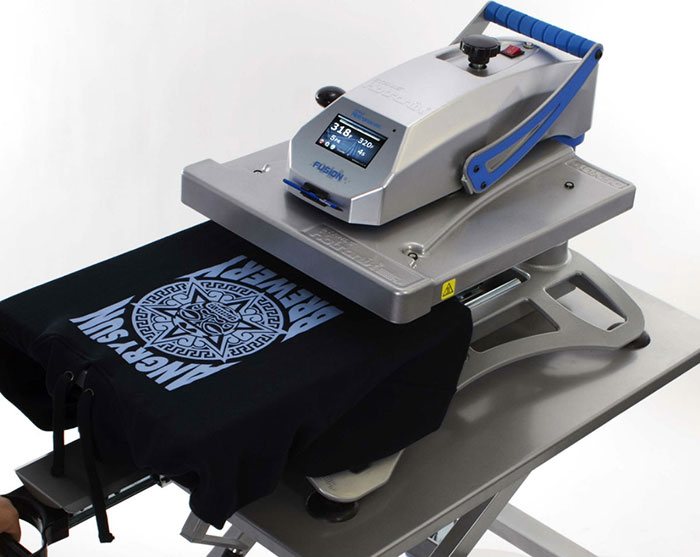There are a wide variety of printing techniques available to decorate your clothes, each having its own advantages.
Screen Printing
Screen printing, or silk-screen printing as it sometimes known, has been around in various forms for hundreds of years, initially being developed in the Far East. It essentially involves applying a design onto a garment by pushing inks through a stencil and a mesh screen. It became popular in the West during the last century, with industrialisation making it an automated process ideal for printing a large volume of items quickly and easily. Andy Warhol famously used screen printing to mass produce his many iconic pieces, including the Campbell's Soup cans pieces in the sixties.


Today, screen printing is ideal if you are producing a large number of items with the same design in one go. Due to the initial set-up costs involved in the production of screens and films required for screen printing, we would recommend a minimum order of 50 pieces if you are considering screen printing. For large orders, say hundreds or even thousands of pieces, screen printing is the obvious and only choice.

Heat Transfer Vinyl Printing
HTV or vinyl printing, involves heat pressing specially designed garment vinyl directly onto a garment using high temperatures and pressure. The heat and pressure is provided by a heat press machine.
This technique is ideal for smaller print runs, as no set-up is required in terms of screens and films, so costs are kept to a minimum. It is quite a manual task, as the vinyl has to be weeded by hand after it has been cut by a plotter and each garment has to be individually pressed with the design. This means that it can a be a laborious and time-consuming operation to print a large number of garments, which is why screen printing is preferred for larger orders.
Vinyl printing works well with designs with limited colours, as a different piece of coloured vinyl needs to be used for each colour in the design. The result is often a bold finish, making it ideal for printing logos and items such as individual names or numbers on a sports top.

Heat Transfer Plastisol Printing
Similar to vinyl printing, plastisol printing involves applying a design onto a garment using a heat press. Where plastisol printing differs from vinyl printing, is that the complete design comes on single a plastic sheet or film and the whole design is transferred onto the garment in one press. There are various ways of manufacturing the plastic transfers, including screen printing and digital printing techniques, such as direct to film printing.
Plastisol transfer printing is perfect for more complex or multi-coloured designs, which would either be impossible or difficult to recreate with vinyl. They can also be used for transferring photographs or cartoon style pictures on to a piece of clothing.
Similar to HVT printing, it can be a low cost alternative to screen printing, ideal for producing smaller quantities.


